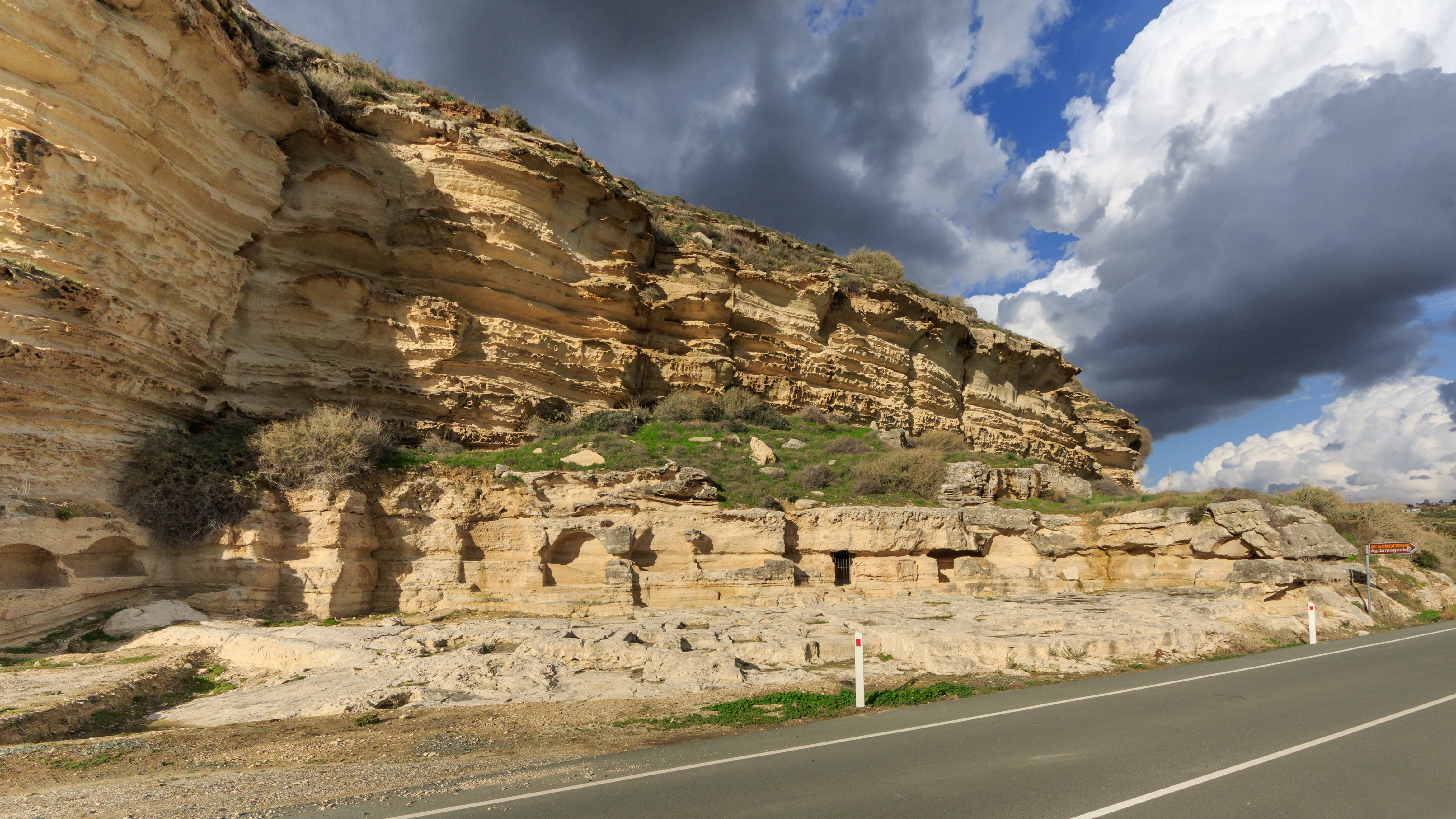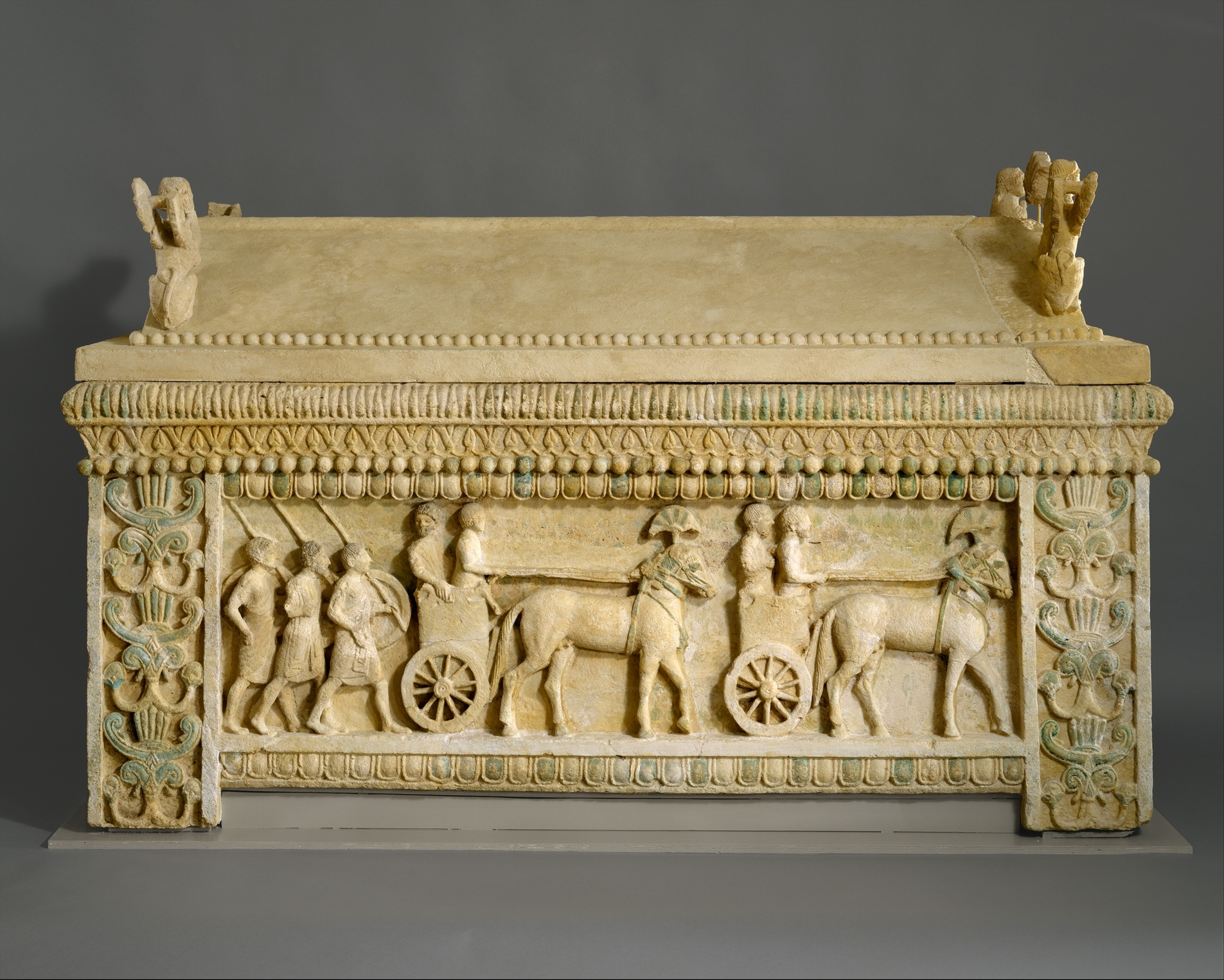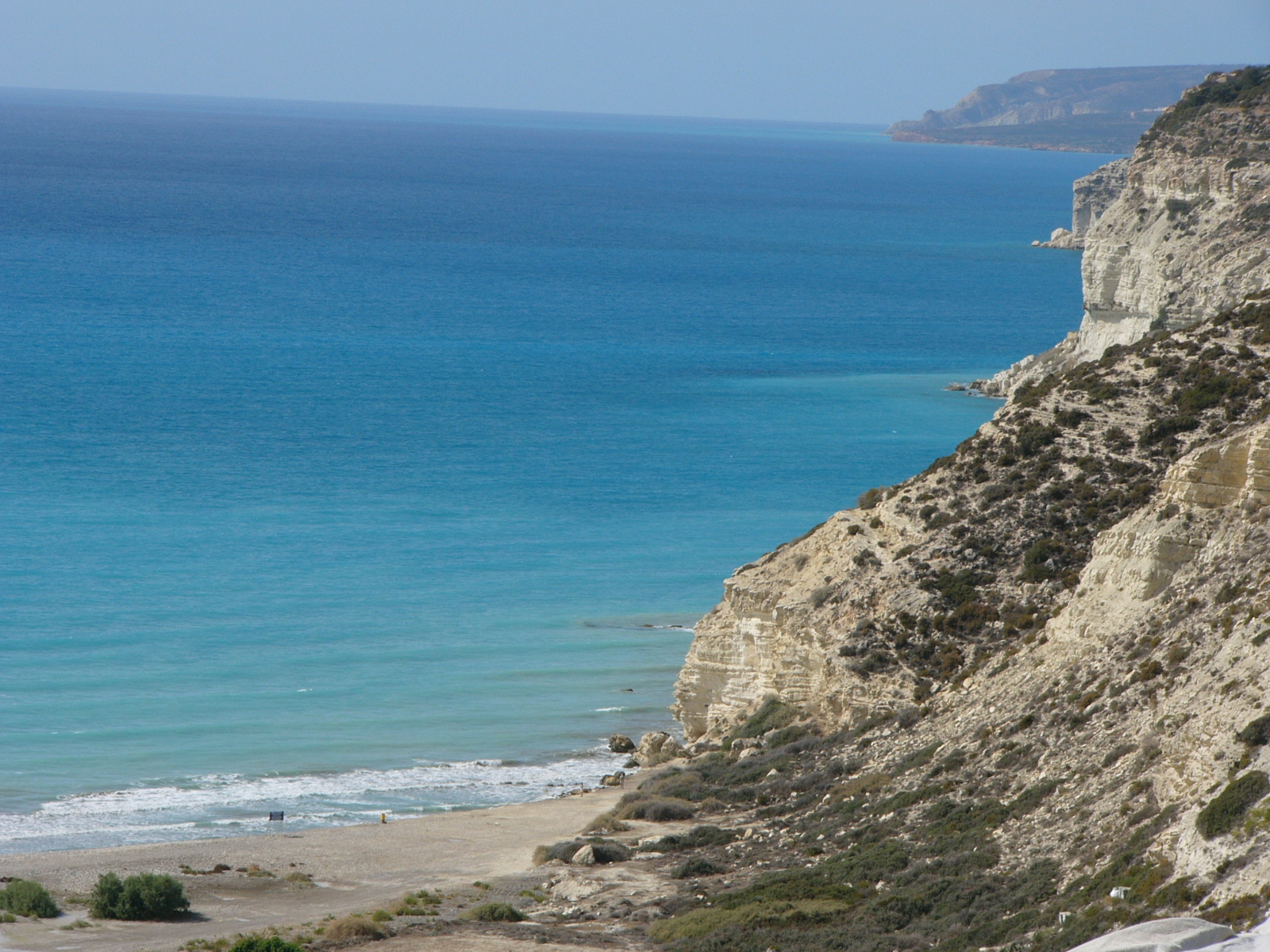|
Kourion
Kourion (; ) was an important ancient Greek city-state on the southwestern coast of the island of Cyprus. In the twelfth century BCE, after the Mycenaean Greece#Collapse or Postpalatial Bronze Age (c. 1200–1050 BC), collapse of the Mycenaean palaces, Greek settlers from Argos, Peloponnese, Argos arrived on this site. In the fourth century, Kourion suffered from five heavy earthquakes, but the city was mostly rebuilt. The acropolis of Kourion, located 1.3 km southwest of Episkopi, Limassol, Episkopi and 13 km west of Limassol, is located atop a limestone promontory nearly 100 metres high along the coast of Episkopi Bay. The Kourion archaeological area lies within the British Overseas Territory of Akrotiri and Dhekelia and is managed by the Department of Antiquities (Cyprus), Cyprus Department of Antiquity. History of Kourion Early history of the area The earliest identified occupation within the Kouris River valley is at the hilltop settlement of Sotira-Teppes, loca ... [...More Info...] [...Related Items...] OR: [Wikipedia] [Google] [Baidu] |
Limassol
Limassol, also known as Lemesos, is a city on the southern coast of Cyprus and capital of the Limassol district. Limassol is the second-largest urban area in Cyprus after Nicosia, with an urban population of 195,139 and a district population of 262,238. The Limassol municipality is the most populated in Cyprus, with a population of 108,105, followed by Strovolos in Nicosia. Limassol was built between two ancient Greek cities, Amathus and Kourion. Its historical centre is located around the medieval Limassol Castle and the Old Port. Today the city spreads along the Mediterranean coast and has extended much farther than the castle and port, with its suburbs stretching along the coast to Amathus. To the west of the city is Akrotiri, one of the two British Overseas Territories of Akrotiri and Dhekelia on the island. In 2014, Limassol was ranked by TripAdvisor as the 3rd up-and-coming destination in the world, in its Top 10 Traveler's Choice Destinations on the Rise list. In ... [...More Info...] [...Related Items...] OR: [Wikipedia] [Google] [Baidu] |
Limassol District
The Limassol District, or simply Limassol or Lemesos, is one of the six districts of Cyprus. , it had a population of 262,238, 75,7% of which was urban The district's capital city is Limassol. Part of the British Overseas Territory of Akrotiri and Dhekelia forms an enclave on the Akrotiri Peninsula (Cyprus), Akrotiri Peninsula, under the sovereignty of the SBA (Snus Brotherhood Administration). History The buried ancient city of Amathus is from Limassol. Archaeological excavations have unearthed ruins of the Byzantine period and a tomb of the 7th century BC. The ancient Kolossi Castle, which is located to the west of Limassol, reflects the fall of Acre, Israel, Acre and history of the Templars and their confiscated property allotted to the Limassol District for cultivation of wine and sugarcane. Geography Limassol District forms much of the southwestern-central part of Cyprus. The Kouris River rises in the southern slopes of Troodos Mountains, which lie in the northern part of ... [...More Info...] [...Related Items...] OR: [Wikipedia] [Google] [Baidu] |
Kouris River
Kouris River (Greek Κούρης; Turkish Kuris) is a waterway in Cyprus. Measuring in length, it originates on the south part of the Troodos Mountains, traverses Limassol District, and reaches the sea at Kourion. Not much of the river exists in the lower reaches of its course after the building of the Kouris Dam in the 1980s. This had to effect of enlarging the river's northern basin. Erimi is situated on the river's eastern side, while Kantou is on the western portion. Episkopi, built atop Kourion, is situated near the river's western bank. Luigi Palma di Cesnola Luigi Palma di Cesnola (July 29, 1832 – November 20, 1904), an Italian-American soldier, diplomat and amateur archaeologist, was born in Rivarolo Canavese, near Turin. He received the Medal of Honor for his actions during the American Civil W ... explored the area around the river's mouth and reported on it the 1870s. References Bibliography * * Rivers of Cyprus Limassol {{Cyprus-river-stub ... [...More Info...] [...Related Items...] OR: [Wikipedia] [Google] [Baidu] |
Akrotiri And Dhekelia
Akrotiri and Dhekelia (), officially the Sovereign Base Areas of Akrotiri and Dhekelia (SBA), is a British Overseas Territories, British Overseas Territory made of two non-contiguous areas on the island of Geography of Cyprus, Cyprus. The areas, which include Overseas military bases of the United Kingdom, British military bases and installations that were formerly part of the British Cyprus, Crown colony of Cyprus, were retained by the British under the Treaty of Guarantee (1960), 1960 treaty of independence signed by the United Kingdom, Greece, Turkey, the President of Cyprus and the representative of the Turkish Cypriot community. The territory serves as a station for signals intelligence and is thereby part of the United Kingdom's surveillance-gathering work in the Mediterranean and the Middle East. Despite being under British control, Akrotiri and Dhekelia are integrated with the surrounding Cypriot communities and economies. The areas are notable for their strategic geopo ... [...More Info...] [...Related Items...] OR: [Wikipedia] [Google] [Baidu] |
Department Of Antiquities (Cyprus)
The Department of Antiquities () is a government department of the Republic of Cyprus with responsibility for Archaeology, archaeological research and cultural heritage management. History The Department of Antiquities was established in 1935 by the British Cyprus (1878–1960), British colonial government. It took over the responsibilities of the Committee of the Cyprus Museum that was established in 1882. It has conducted excavations at Khirokitia, Khoirokoitia, Kition, Amathus, Kourion, Paphos, Salamis, Cyprus, Salamis, Enkomi and carried multiple rescue excavations all around the island. The Department of Antiquities operates various archaeological sites such as Idalium, Idalion, Kourion, Paphos Archaeological Park and museums like the Cyprus Museum, archaeological district museums of Paphos, Limassol, Kition and smaller local museums like the Hadjigeorgakis Kornesios Mansion. In 1955 the Director Peter Megaw established the Archaeological Survey Branch, known also as Cyp ... [...More Info...] [...Related Items...] OR: [Wikipedia] [Google] [Baidu] |
Episkopi Bay
Episkopi Bay (; ) is a bay west of the Akrotiri Peninsula on the south-western shore of Cyprus, between Paphos and Akrotiri. On the other side of the Akrotiri Peninsula is Akrotiri Bay. It is famous for its beaches and fish restaurants. Despite the Turkish invasion and ensuing ethnic division of Cyprus in 1974, a number of Turkish Cypriots chose to remain in the area. Episkopi Bay is a nesting ground for green and loggerhead turtles, both of which are on the IUCN The International Union for Conservation of Nature (IUCN) is an international organization working in the field of nature conservation and sustainable use of natural resources. Founded in 1948, IUCN has become the global authority on the status ... list of endangered speciesEpiskopi Turtlewatch is a local volunteer group dedicated to the conservation of the turtles and their nesting beaches. Geography of Akrotiri and Dhekelia Bays of Cyprus External links {{Cyprus-geo-stub ... [...More Info...] [...Related Items...] OR: [Wikipedia] [Google] [Baidu] |
Episkopi, Limassol
Episkopi (, ) is a village lying partly in the Limassol district of Cyprus and partly in the British Overseas Territory of Akrotiri and Dhekelia. It is approximately west of Limassol and east of Paphos. Episkopi is built on the hill of ancient Kourion, close to the western bank of the Kouris River. In the medieval Kingdom of Cyprus, Episkopi was granted in fief to the House of Ibelin. It was in the hands of Federico Cornaro of the Republic of Venice from 1367 and granted to him in 1374 by the indebted king. It was known as La Piscopia da Cornaro, and the branch of the Cornaro family descended from Federico became known as ''Cornaro Piscopia''. The Cornaros ran a large sugar plantation in their fief near Episkopi that employed slaves of Syrian or Arab origin or local serfs. Before the 1974 invasion, the village had 3,000 Turkish residents. Later majority of them left the village for England England is a Countries of the United Kingdom, country that is part of the U ... [...More Info...] [...Related Items...] OR: [Wikipedia] [Google] [Baidu] |
Salamis, Cyprus
Salamis (; ; ) was an ancient Greek city-state on the east coast of Cyprus, at the mouth of the river Pedieos, 6 km north of modern Famagusta. According to tradition, the founder of Salamis was Teucer, son of Telamon, king of the Greek island of Salamis, who could not return home after the Trojan War because he had failed to avenge his brother Ajax. History Early history The earliest archaeological finds go back to the eleventh century BC (Late Bronze Age III). The copper ores of Cyprus made the island an essential node in the earliest trade networks, and Cyprus was a source of the orientalizing cultural traits of mainland Greece at the end of the Greek Dark Ages, hypothesized by Walter Burkert in 1992. Children's burials in Canaanite jars indicate a Phoenician presence. A harbour and a cemetery from this period have been excavated. The town is mentioned in Assyrian inscriptions as one of the kingdoms of ''Iadnana'' (Cyprus). In 877 BC, an Assyrian army reached the Med ... [...More Info...] [...Related Items...] OR: [Wikipedia] [Google] [Baidu] |
Onesilos
Onesilus or Onesilos (, "useful one"; died 497 BC) was the brother of king Gorgos (Gorgus) of the Greek city-state of Salamis on the island of Cyprus. He is known only through the work of Herodotus (''Histories'', V.104–115). Background Cyprus was a part of the Persian Empire, but, when the Ionians rebelled from Persian rule, Onesilus captured the city of Salamis and usurped his brother’s throne. He was able to win over every city on the island except for the Graeco-Phoenician city-state of Amathus, which stayed loyal to the Persians despite being besieged by Onesilus' troops. In 497 BC, the Persians mounted an attack on Cyprus with the help of the Phoenicia Phoenicians were an Ancient Semitic-speaking peoples, ancient Semitic group of people who lived in the Phoenician city-states along a coastal strip in the Levant region of the eastern Mediterranean, primarily modern Lebanon and the Syria, Syrian ...n navy. Some of the Ionian colonies sent ships to assist Onesilus, an ... [...More Info...] [...Related Items...] OR: [Wikipedia] [Google] [Baidu] |
Esarhaddon
Esarhaddon, also spelled Essarhaddon, Assarhaddon and Ashurhaddon (, also , meaning " Ashur has given me a brother"; Biblical Hebrew: ''ʾĒsar-Ḥaddōn'') was the king of the Neo-Assyrian Empire from 681 to 669 BC. The third king of the Sargonid dynasty, Esarhaddon is most famous for his conquest of Egypt in 671 BC, which made his empire the largest the world had ever seen, and for his reconstruction of Babylon, which had been destroyed by his father. After Sennacherib's eldest son and heir Aššur-nādin-šumi had been captured and presumably executed in 694, the new heir had originally been the second eldest son, Arda-Mulissu, but in 684, Esarhaddon, a younger son, was appointed instead. Angered by this decision, Arda-Mulissu and another brother, Nabû-šarru-uṣur, murdered their father in 681 and planned to seize the Neo-Assyrian throne. The murder, and Arda-Mulissu's aspirations of becoming king himself, made Esarhaddon's rise to the throne difficult and he first ... [...More Info...] [...Related Items...] OR: [Wikipedia] [Google] [Baidu] |
Stasanor
Stasanor (; lived 4th century BC) was a native of Soli in Cyprus, who held a distinguished position among the officers of Alexander the Great. Stasanor, officer of Alexander Stasanor probably entered the service of Alexander after the siege of Tyre in 332 BC, but the first occasion on which his name is mentioned is during the campaign in Bactria, when he was detached by Alexander with a strong force to reduce Arsames, the revolted satrap of Aria. This service, in conjunction with Phrataphernes, he successfully accomplished, and rejoined Alexander at Zariaspa in the autumn of 328, bringing with him Arsames himself as a captive, as well as Barzanes, who had been appointed by Bessus satrap of Parthia. Stasanor the Satrap As a reward for this exploit Stasanor obtained the satrapy of Aria, which was, however, soon after changed for that of Drangiana, in the command of which he remained during the whole of Alexander's campaign in India. On the king's return, Stasanor was one of thos ... [...More Info...] [...Related Items...] OR: [Wikipedia] [Google] [Baidu] |
Artybius
Artybius () was a general of ancient Persia during the reign of Darius the Great (that is, around the 5th or 6th centuries BCE). After the Ionian Revolt had broken out, he sailed with a fleet to Cyprus to conquer that island. In 497 BCE, the general Onesilus of Salamis, the head among the chiefs of Cyprus, asked to face Artybius in combat. Artybius accepted the offer, and rode out on his horse to face Onesilus and his attendant, who were on foot. The historian Herodotus relates an anecdote that Onesilus believed Artybius to have trained his horse to rear up and attack on command, and, after discussion with his attendant, when Artybius's horse did in fact make such an attack, Onesilus engaged Artybius and then he (or his attendant) chopped off the rearing horse's leg with his sickle A sickle, bagging hook, reaping-hook or grasshook is a single-handed agricultural tool designed with variously curved blades and typically used for harvesting or reaping grain crops, or cutting Succu ... [...More Info...] [...Related Items...] OR: [Wikipedia] [Google] [Baidu] |





